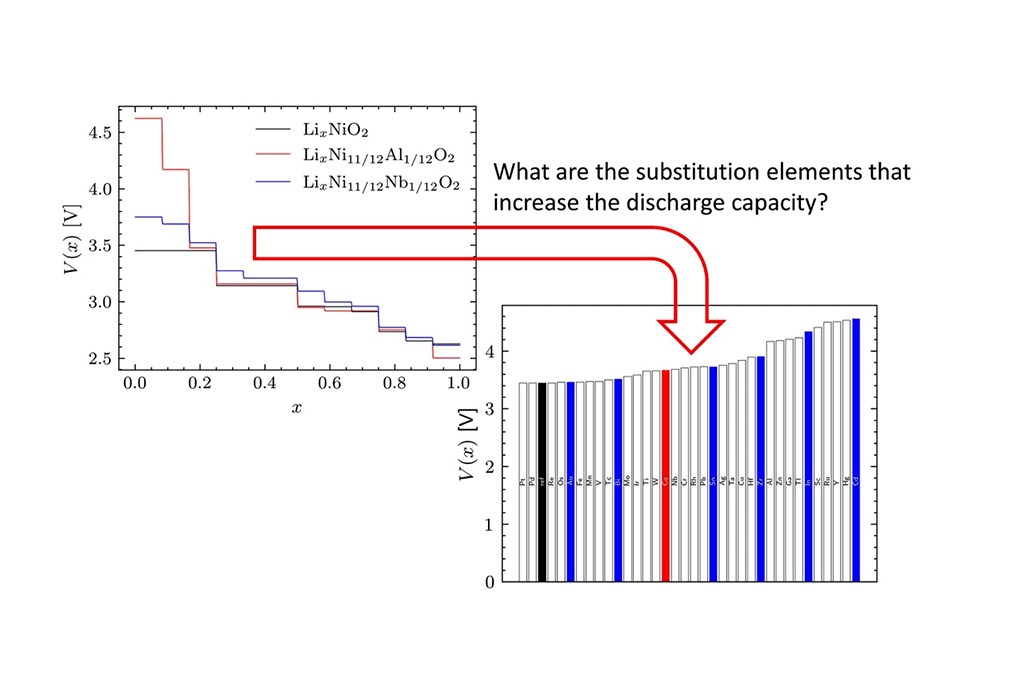With the move towards electrical powered vehicles, newer, higher capacity batteries are needed. To increase battery life, it is necessary to develop a battery that can be maximally charged and in which the voltage does not drop easily at the end of discharge. The research group of Professor Ryo Maezono at the Graduate School of Advanced Science and Technology, Japan Advanced Institute of Science and Technology (JAIST), performed simulations to predict that the characteristics related to the capacitance and voltage could be improved by adding chromium, iron, vanadium, and platinum to a nickel-based electrode material, as per conventional technology. This study was published in the online version of The Journal of Physical Chemistry C.
To improve the performance of lithium-ion batteries, extensive research is being performed to drive innovations regarding the material used as the positive electrode (cathode). Specifically, as an alternative to the cobalt-based cathode that was first developed, the use of nickel resulted in improved cost and capacity. However, research and development efforts are underway to increase the battery life by replacing a part of nickel with another metal species. Simulations enable the narrowing of possibilities regarding the metal type and amount to be used, because the manufacture of batteries with the trial-and-error approach can very expensive and labor intensive.
Many predictions to extend the battery life have been attempted through simulations, but the elemental substitutions predicted till date led to decreased capacity of the battery upon increasing its life. This has resulted in the need for a simulation that can predict the elemental substitution required to achieve a high battery capacity. In order to achieve this, it is necessary to calculate the many halfway states from the charged state to the discharged state in addition to the different possible combinations of the metal type and substitution amount to predict the capacity of the battery by simulation. It is costly and practically impossible to perform accurate simulations and predictions for such a large number of cases.

Credit: JAIST
The research group resolved this issue using data science methods. The researchers avoided simulating all the large combinations of metal species/substitutions/discharges; instead, they simulated the voltage only for some discharges and a limited number of typical metal species, and allowed the computer to learn the results. By learning the pattern of the change in voltage with the amount of discharge, the calculation effort for other metal types could be eliminated. Using this method, the researchers were able to realize the first simulation for predicting elemental substitution to increase the battery capacity. Promising results were obtained within the scope of replacing nickel with a single element. The possibility of obtaining high-capacity batteries will be further investigated by searching for combinations of two or more elements. It is expected that this method will accelerate the development of materials that can be used to further improve the battery life.
This article has been translated by JST with permission from The Science News Ltd.(https://sci-news.co.jp/). Unauthorized reproduction of the article and photographs is prohibited.




